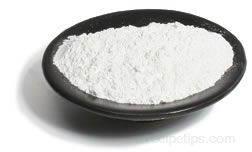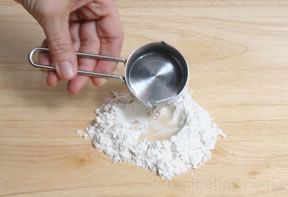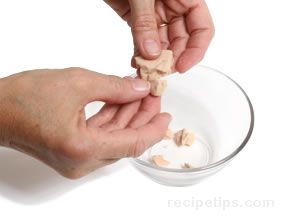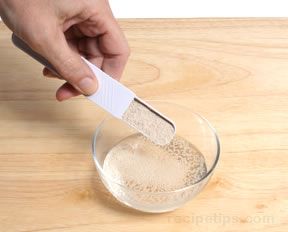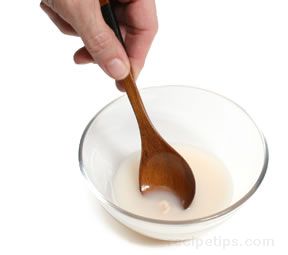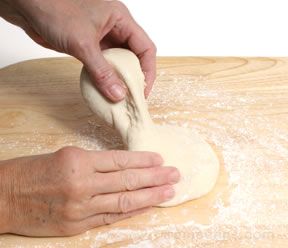The chemical leavening agent, baking powder, is a mixture of baking soda, an alkaline ingredient; cream of tartar, an acidic ingredient; and a starch, such as cornstarch, which prevents clumping of the powder. It is most often used in quick bread recipes that contain no acidic ingredients. It reacts immediately when added to liquids. Baking powder is often referred to as; “double acting baking powder,” because it causes two separate rising actions to occur in the dough or batter. The first reaction occurs when the baking powder is mixed with liquid ingredients causing carbon dioxide gas to be produced, which causes the batter or dough to rise. The second reaction occurs when heat is applied during the baking process, which causes further expansion.
Baking soda is an alkaline leavening agent made of sodium bicarbonate that reacts immediately when combined with a liquid. In most quick bread recipes, the baking soda is mixed with the other dry ingredients before any liquid ingredients are added. In order for baking soda to work properly as a leavening agent, it must be used in recipes that contain acidic ingredients, such as molasses, buttermilk, or chocolate. The chemical reaction produces carbon dioxide gas, which cause the batter or dough to rise.
Cream of tartar is also used as a leaven. It is an acidic ingredient that is often used in conjunction with baking soda, which is an alkaline ingredient.

